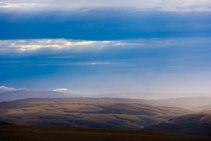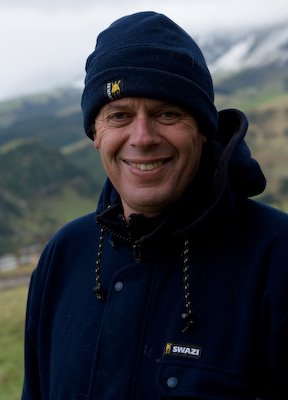
There is nothing worse than a sharp image of a fuzzy concept.
-Ansel Adams
Considered logically this concept is not identical with the totality of sense impressions referred to; but it is an arbitrary creation of the human (or animal) mind.
-Albert Einstein
Kia ora tatou:
A number of you have posted, asking if I would share a few of my secrets involved in making my images, or more specifically, what techniques I use.
Well, there aren’t any. Sorry, but it’s true. For quite some time I have focused in these posts on why I make images, rather than how. It all starts there. If you don’t know what it is you are trying to say, then realising an image will be a fraught experience at best. As the quote above suggests, the best place to put the effort in, is in developing a philosophical base for your work. Then all the technical decisions fall into place.
I will however attempt to unpack my working method for you. I hope this helps, and that it generates sufficient questions for it to become an ongoing discussion. Please feel free to ask questions or make suggestions. So here goes.
The first thing is to say( in case you haven’t noticed), that I am firmly digital. Don’t get me wrong, I still love film. In fact I am about to do some revisiting of working with it again. There are some understandings I need to revisit and explore. More about that as and when it happens.
If you are digital, there is a price to pay. Computer time. There is no getting around it. If you shoot film, and here I am referring to colour, everything is pretty much done when you press the shutter. You unload the film and hand it to the lab. They process it, using a carefully defined and controlled process (C-41 or E-6) and voila, there you have it, the finished product. They can print it for you or you can use a scanner and make your own prints. Either way there is not a lot of computer time required. So you need to ask yourself: how do I feel about spending time on the computer and acquiring the knowledge to do it effectively? If the answer is in the negative, then stick to film. If, however, you are prepared to put in the time understanding your computer and the software you need to get the best out of your image, digital could well be the way for you. Time and time again I have seen people buy digital cameras, thinking it would make their lives easier (and save them money) only to be disappointed with the results and frustrated because they feel the whole process has got away on them. To make successful images using a digital camera, you have to be prepared to put in the time on the computer. There is no simple or easy path for the digital photographer. When you “go digital” you become the lab.
I’ll come at this from a different direction.
A long time ago, in a previous life, I read a book called The Negative by Ansel Adams. That led me to reading the follow up book The Print, also by him. This opened my eyes to the concept of pre-visualisation. Let me explain this term. Ansel is credited with the invention, or more correctly, the development of what he calls The Zone System. As a Realist and member of the F64 school he was concerned with developing a method of exposure, development and printing that was extremely predictable. In fact all the members of F64 (Weston, Cunningham et al) took this technical/philosophical standpoint. It needs to be remembered that they followed hot on the heels of the Pictorialist movement who regarded technical precision as an impediment to conceptualisation, that the feeling generated in the photograph was more important than the technique, that the latter was by and large irrelevant.
In Adam’s Zone System the underlying idea is that of being able to pre-visualise the finished print before you press the shutter. This means you need to understand every aspect of the process; camera, lens, film, exposure and development choices, and paper/developer combinations, not to mention post-production techniques such as toning, matting and presentation. Bit by bit, during my 20 years in the darkroom, I came to understand and know more about each step of the process. I learned that German lenses gave a greater subtlety in the mid-tones than the more contrasty Japanese lenses, that Agfa APX 100 worked brilliantly in a studio but was difficult to use in the landscape, that T-Max 100 could be made to do tricks and stand on its ear depending on my choice of developer (Xtol, TMax or TMax RS developer) that Forte paper required very high dilutions of selenium toner because it was so silver-rich. In other words, I put a lot of time into understanding each component of the process. That way I could achieve what I was trying to say. Whatever that was. I thoroughly recommend reading The Print and The Negative. Ignore all the stuff about developers, film choice, and so on (unless of course you belong to the arcane and shrinking darkroom fraternity). Concentrate instead on the overall picture Adams in trying to paint, the idea of understanding each and every component of the process so that you can make informed choices when you go out into the field.
Digital is no different. The technology may have changed but the process remains the same. You still need to understand the characteristics (and character) of your lenses; you still need to understand the unique flavour your sensor (read: Digital Film) imparts to a subject; you need to understand the look your choice of raw converter or processing software will bring to the file; you need to understand how your choice of printer, ink and paper will affect the finished look of your image.
As you can see, darkroom and lightroom, digital and film, have a lot in common.
There are two significant components to making a digital print.
- Capture
- Production
To my mind Capture is about 30 percent of the process. Camera, lens and exposure techniques are about a third of what you need to know. The remaining 70 percent is about understanding what to do when you get the file into your computer and the impact of decisions you make in this part of the process. This takes time and practice and trial and error.
But especially time (Photography is, after all, about Time).
I intend, as and when, to put up a series of articles that explore each step of the process. Today I will share a few techniques I use to ensure I have the best possible file on my card for later processing.
Photography is all about information. It always has been, it always will be. This means selecting an appropriate focal length, appropriate depth of field, and making an exposure that will yield the greatest amount of information. For that reason, I will always shoot in Raw.
- I rely heavily on the histogram to give me that information. I usually make a trial exposure then analyse the histogram. My camera offers me the choice of either luminance (read: Light/Dark) or RGB, enabling me to see the information captured on each channel. I always use the latter, because I have learned that if I use the luminance histogram, scenes with a predominance of one colour can clip (over-expose) without my being aware of it. The RGB histogram helps me see that and helps prevent that from happening. Canon sensors have a real tendency to over-respond to red wavelengths of light, so if I am working with a sunset or brightly coloured flowers I take extra care in checking the red channel on my histogram.
- I regard the LCD on the back of my camera as a way of checking composition rather than exposure (I use the histogram for the latter). Since most information is recorded at the right end of the histogram I will bias exposure so that the histogram is as far as possible to the right without clipping. (It may look weird but I know I have as much information as I can get. I can always discard information; I can never add it in.) I might add at this point that I shoot jpegs quite differently. Shooting a jpeg is like shooting slide film; the tones on your file need to duplicate as accurately as possible those in the scene. And a tenth of a stop is significant. If the scene is high-key composed of predominantly light tones, then the histogram on the jpeg file should lean to the right-hand end of the histogram; a predominantly dark scene (coal miner standing in his mine) should lean left. A scene composed of a broad range of tones should be roughly in the middle.
- A digital image, in spite of what some might say, has a brightness range of 5 stops, which means it is very similar to slide film. Care and precision in exposure are critical if you are to get the best possible print at the end of it all. Time and effort at this stage of the process (and making a photograph is a process) will save you time, effort and frustration later in the process.
As an example, years ago, in my darkroom days (which I gave up when I found I was allergic to the chemicals) I discovered that while I enjoyed the darkroom I really didn’t enjoy spending hours and hours labouring over a print made from a badly exposed negative. I guess I was a naturally lazy printer. When I realised how easy it was to make a print from a perfectly exposed and developed negative (and believe it or not there are degrees of perfection) I put more and more time into exposure and development. Making prints then became a matter of refinement rather than rescue. A good friend (who shall remain nameless – some of you know who I’m talking about) never worried much about the niceties of darkroom technique. Near enough was good enough. And his negatives were appalling to behold.
Over the space of 18 months to 2 years he evolved his printing techniques into an art form. His mastery of making prints in the darkroom grew enormously. Necessity is the mother of invention.
His concepts were sharp but his techniques were fuzzy.
Ka kite ano.



2 comments:
Thanks for this blog Tony. I have been getting frustrated with some of my exposures lately so I'll be checking out my histograms a lot more closely from now on.
Pre-visualisation is easy to miss in the excitement of making images. But I notice that the difference shows when I do think ahead to "just what am I trying to say here" and "exactly how am I going to say it".
Preparation, preparation... ;)
Tony: What about filmies who feel dissatisfied with what the lab produces and would like to have more control over the printed image? Presumably it's possible to scan either a print or a negative and work on that as you would for a digitally-captured image? Are there traps in this?
Also, I don't understand what you mean by "most information is recorded at the right-hand end of the histogram". (I do know what a histogram is, but don't understand why the right-hand end is significant.) Is this something I should just go and find out for myself? If so, where should I look?
Cheeky PS.
When I'm considering whether to continue with film or to go digital, if my answer to the question about how I feel about spending lots of time on the computer is "in the negative", then it's self-evident that I should stick to film - isn't it?
Post a Comment